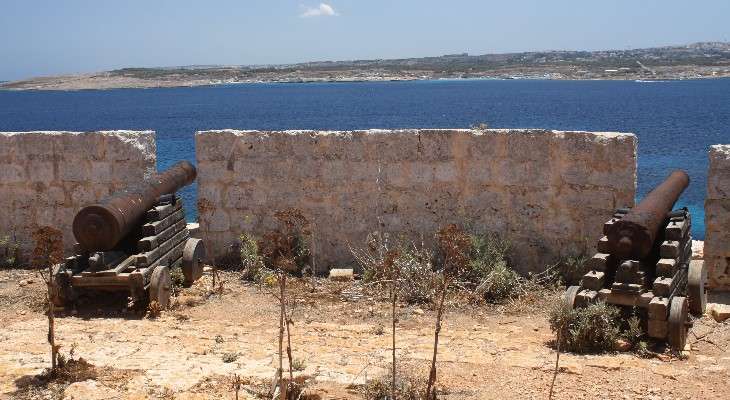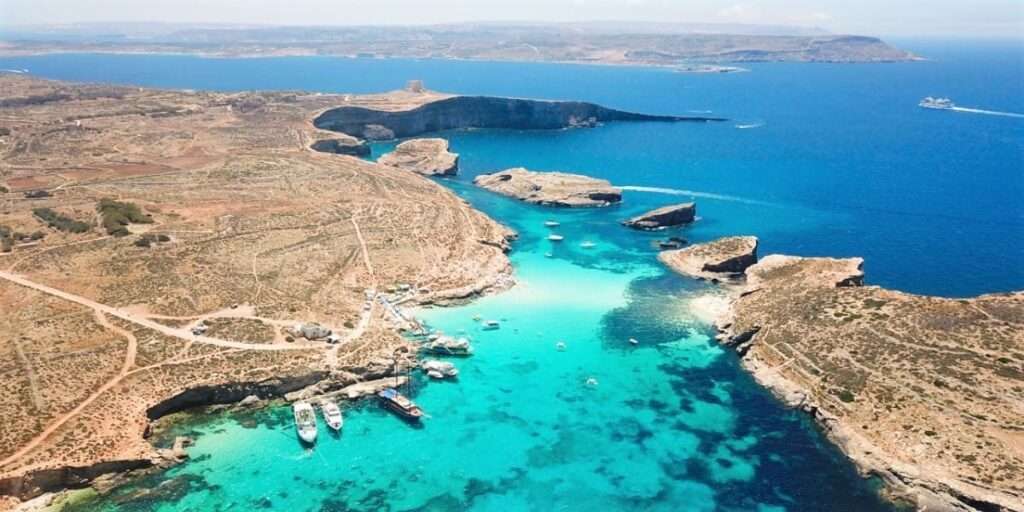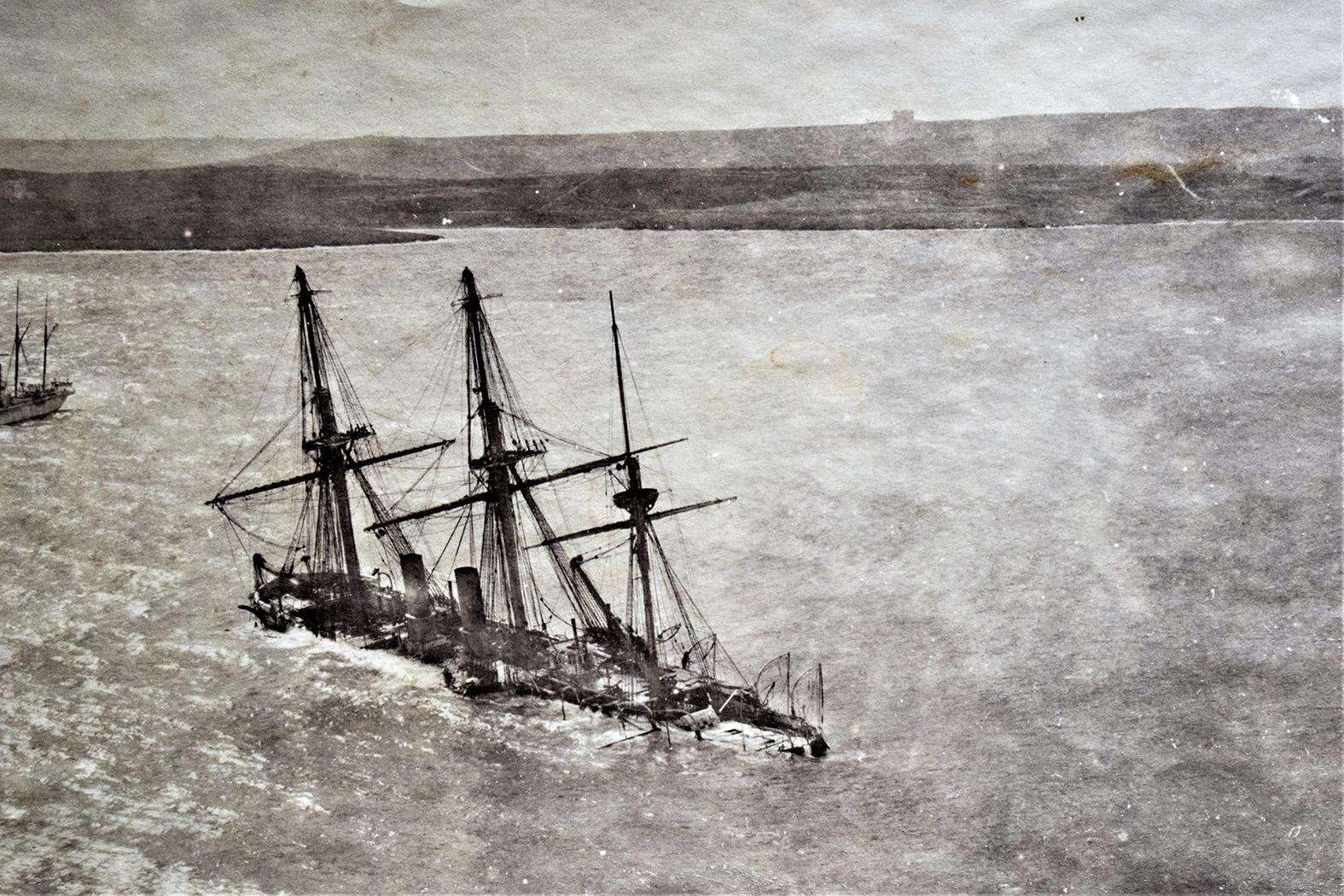Table of Contents
ToggleComino in the Napoleonic and British Period
A Tiny Island of Comino at the Crossroads of Empire
When Napoleon swept into the Mediterranean in 1798, few places were left untouched by his ambition. Malta, sitting squarely on the sea routes between Europe and North Africa, was a strategic jewel—and even the smallest of its islands, Comino, would find itself caught in the tide of history. Though only a few kilometers wide, Comino became a silent witness to the great European power struggles of the late eighteenth and early nineteenth centuries. Its windswept cliffs, ancient watchtower, and quiet coves all played their part in a story of empires, smuggling, and survival.
The French Arrive
In June 1798, Napoleon Bonaparte, on his way to Egypt, captured Malta from the Knights of St. John with astonishing ease. The island had long been a stronghold of the Order, but its defenses were outdated, and internal dissent made conquest swift. Comino, with its single watchtower and a handful of residents, was simply absorbed into the new regime.
For the French, Comino was a minor outpost, but strategically, it remained important. The narrow channel between Malta and Gozo was a vital route, and any enemy ship attempting to pass could be easily seen from the heights of St. Mary’s Tower. Though the French occupation of Malta was brief—lasting just two years—it left an impression of uncertainty and fear among the islanders.
Napoleon’s troops introduced sweeping reforms to Malta, but many Maltese resented the changes, especially the seizure of Church property. A revolt soon followed, and Comino, caught between the two main islands, became a kind of frontier zone. Its few inhabitants lived cautiously, watching the conflict play out across the waters while hoping not to draw attention from either side.

The British Take Over
By 1800, British forces had joined the Maltese insurgents in besieging the French garrison in Valletta. When the French finally surrendered, Malta—and by extension, Comino—fell under British protection. This marked the beginning of a long chapter of British rule that would shape the islands for over 150 years.
For the British, control of the Maltese islands was primarily a question of naval dominance. The Mediterranean was the lifeline of empire, and Malta’s harbors became essential refueling and repair stations for the Royal Navy. Though Comino lacked a port or large population, its position made it a useful lookout point and a barrier against illegal activity.
During this period, the British began restoring St. Mary’s Tower, originally built in 1618 by the Knights of St. John. The tower had already seen centuries of service as a signal post and defensive structure, but time and neglect had left it weakened. The British recognized its potential once more—not as a fortress against invading fleets, but as a base for anti-smuggling patrols and coastal observation.
Smugglers and Signal Fires
The early nineteenth century was a time of widespread smuggling throughout the Mediterranean. The Napoleonic Wars had disrupted trade routes, and high tariffs encouraged the movement of contraband goods. The narrow channels around Malta and Gozo were ideal for smugglers’ boats, and Comino’s coves—especially Santa Marija Bay and the inlets facing Cominotto—offered convenient hiding spots.
British patrols began using St. Mary’s Tower as a signal station. From its high parapet, soldiers and watchmen could observe the sea lanes stretching in every direction. Fires or flag signals were used to communicate sightings of suspicious vessels to posts on Malta and Gozo.
Though quiet today, the tower’s walls once echoed with the sounds of sentries keeping watch through the night. Supplies had to be brought in by boat, and the small detachment of guards led a lonely existence, exposed to harsh winds and long stretches of isolation. For them, Comino was both a duty post and a test of endurance.
The St. Mary’s Battery
Just below the tower, another structure added to Comino’s defensive network: the St. Mary’s Battery, built around 1716 by the Knights. Designed to guard the channel between Comino and Gozo, it housed several cannons pointing toward the sea. When the British took over, the battery had already fallen into partial disrepair, but its location remained valuable.
Rather than fully militarize the site, the British restored it for observation and signaling purposes. Cannons were repaired or replaced as needed, though large-scale action was rare. Comino’s defensive role was mostly preventative—its presence reminded seafarers that the channel was watched and that British authority extended even to this tiny, barren island.

Life on a Remote Outpost
Life on Comino during the British period was austere but not without a sense of importance. The handful of soldiers stationed there represented the might of an empire stretching across continents. Their letters and reports mention the monotony of daily routines—cleaning weapons, maintaining the tower, and scanning the horizon—but also the beauty of their surroundings: clear waters, seabirds wheeling overhead, and sunsets that turned the limestone cliffs gold.
Occasionally, Comino served as a temporary quarantine station for ships suspected of carrying disease, a role that harked back to its earlier use under the Knights. At other times, it offered a safe anchorage for British vessels patrolling between Malta and Sicily. Despite its isolation, the island remained quietly useful, a steadfast outpost in an ever-changing Mediterranean world.
The End of an Era
As the nineteenth century progressed, Comino’s military relevance gradually faded. Steamships replaced sailing vessels, and Malta’s harbors at Valletta and Marsamxett became the true centers of naval power. St. Mary’s Tower and Battery slipped into peaceful retirement, visited only occasionally by watchmen, farmers, or curious travelers.
Yet even in neglect, these structures stood as enduring symbols of a time when Comino’s cliffs guarded the sea routes of empires. Today, when visitors climb to the top of St. Mary’s Tower and gaze out across the Blue Lagoon, they are looking from the same vantage point where British sentries once scanned the horizon for smugglers and enemy sails.
In the quiet hum of wind and sea, the echoes of those turbulent years still linger—a reminder that even the smallest islands can bear witness to the grand movements of history.




